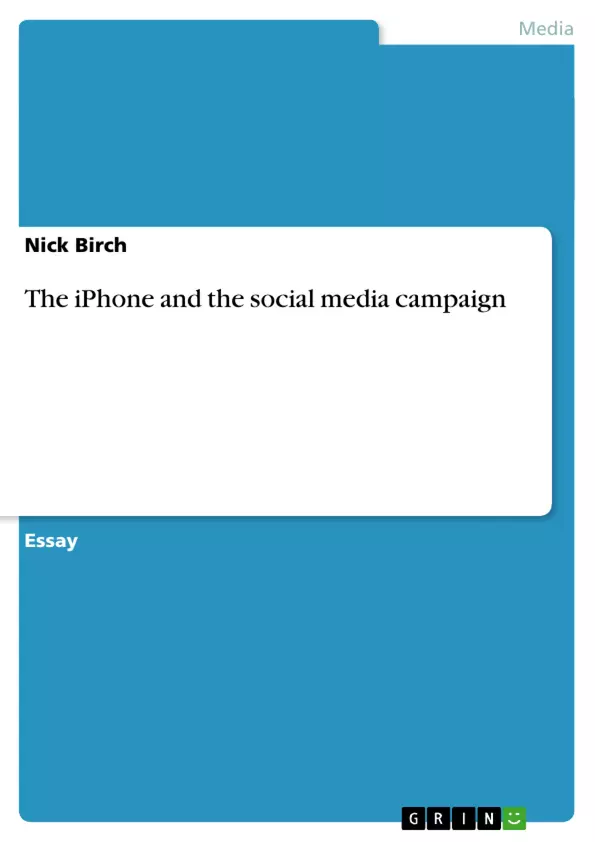Mobile phones are a product that are easy to sell as they are intrinsic to our modern lives, however at the same time it is increasingly difficult to sell one particular handset due to the complete and utter saturation of handsets already on the market. For any kind of handset to procure a foothold, let alone a decent market share, is an enormous challenge for any manufacturer. Apple’s campaign to introduce the iPhone, which is a device that combines a mobile phone, iPod, email and internet browsing capabilities, may be the most successful marketing effort ever (Koeppel, 2007). The ongoing campaign to market the iPhone may be measured by theoretical marketing tools such as AIDA and Maslow’s model of Human Motivation to observe and understand its varying successes. The real success however, lies in Apple’s customer knowledge and manipulation of social media to allow others to do the work for them.
Inhaltsverzeichnis (Table of Contents)
- Introduction
- AIDA
- Maslow's Hierarchy of Needs
- The Launch
Zielsetzung und Themenschwerpunkte (Objectives and Key Themes)
This text analyzes the successful marketing campaign behind the iPhone, examining how Apple used both traditional and social media to achieve its marketing goals. The focus is on exploring how Apple's marketing strategy leveraged established models like AIDA and Maslow's Hierarchy of Needs to create a buzz and attract a broad audience.
- The role of social media in shaping consumer perception of the iPhone.
- The effectiveness of Apple's use of AIDA and Maslow's Hierarchy of Needs in its campaign.
- The evolution of Apple's marketing strategy for the iPhone, from its initial launch to the later stages.
- The impact of Apple's "cool" factor on the iPhone's appeal.
- The use of targeted advertising and consumer engagement in the iPhone campaign.
Zusammenfassung der Kapitel (Chapter Summaries)
The introduction provides context by discussing the competitive nature of the mobile phone market and highlights the iPhone's success as a device combining diverse functionalities. It sets the stage for examining the marketing strategy behind its launch.
The section on AIDA explores the mnemonic framework used in marketing to guide communication strategies, focusing on how it was applied to the iPhone campaign.
Maslow's Hierarchy of Needs is discussed as a framework for understanding human motivation and its potential application in marketing. The iPhone's features are analyzed within this model, evaluating how they address different levels of human need.
The launch chapter delves into the actual release of the iPhone, including Apple's marketing efforts such as the launch event, online video clips, and a breakthrough television commercial. The chapter discusses Apple's advertising strategy and the use of social media to build buzz and anticipation.
Schlüsselwörter (Keywords)
This text explores the key themes of marketing, consumer behavior, social media, and the iPhone's success. It analyzes the effectiveness of Apple's marketing strategy, examining their use of AIDA, Maslow's Hierarchy of Needs, and social media to create a successful campaign.
- Quote paper
- Nick Birch (Author), 2009, The iPhone and the social media campaign, Munich, GRIN Verlag, https://www.grin.com/document/269672



